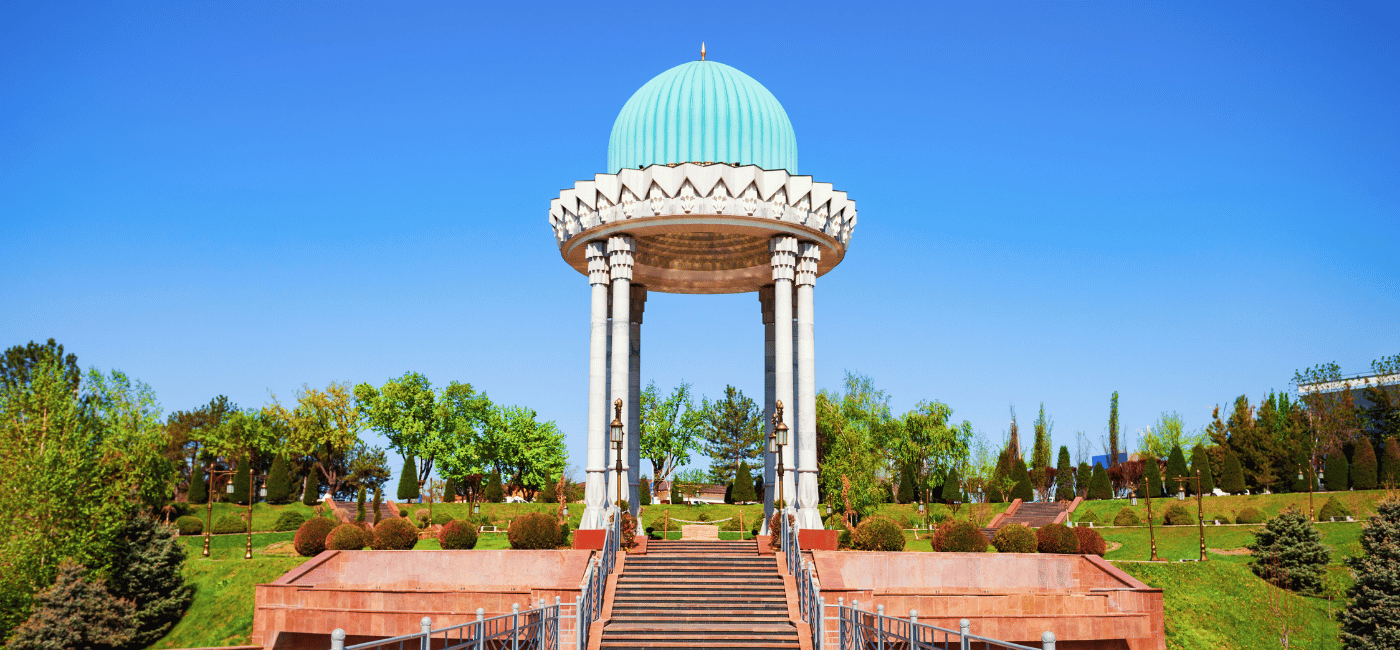Memorial to the Victims of Repression in Tashkent

Memorial to the Victims of Repression
The Memorial to the Victims of Repression (also known as the Memorial Complex of Repression Victims) is a significant historical site in Tashkent, dedicated to the memory of the millions of people who suffered under political repression during the Stalinist era in the former Soviet Union. It stands as a solemn reminder of the atrocities and human suffering that occurred during one of the darkest periods of Uzbekistan's history and is an important monument for reflection and remembrance.
Historical Context
The Great Purge of the 1930s and subsequent periods of political repression under Stalin and his successors targeted millions of people across the Soviet Union, including intellectuals, artists, political dissidents, and ordinary citizens. Many were arrested, tortured, exiled, or executed.
Uzbekistan, like many other republics of the Soviet Union, was affected by these policies, and many of its citizens were victimized by the repressive state machinery during this time.
In 1999, the Memorial to the Victims of Repression was built as a place to honor those who suffered during this period, particularly those who lost their lives or were displaced due to Stalin's purges.
Key Features of the Memorial
Monument: The memorial features a tall central obelisk, symbolizing the strength and resilience of the people who endured Soviet oppression.
The obelisk is surrounded by inscriptions and plaques with the names of prominent figures, victims, and groups who were targeted by the Soviet regime.
Eternal Flame: An eternal flame burns at the memorial as a symbol of remembrance for those who were lost, serving as a reminder that their suffering should never be forgotten.
Walls of Memory: The memorial is adorned with walls featuring the names of thousands of individuals who were victimized by repression, including names of intellectuals, artists, political figures, and ordinary citizens.
Sculptures: The site also features several sculptures that represent suffering, endurance, and hope. The artwork captures the pain of the repression era and the strength of those who survived.
Commemorative Activities: The Memorial hosts ceremonies and events on important dates related to the Soviet repression, including remembrance days for the victims.
It is an essential location for honoring the legacy of those who were wrongfully persecuted by the Soviet government.
Significance
The Memorial to the Victims of Repression serves as an essential space for reflection, healing, and education about the suffering and tragic events of the Soviet period in Uzbekistan.
It is not only a place of mourning but also a symbol of the country’s commitment to acknowledging its past, facing historical injustices, and ensuring that the victims of repression are never forgotten.
The memorial plays an important role in Uzbekistan's efforts to foster truth and reconciliation and create a more open dialogue about the difficult parts of the nation’s history.
Location and Accessibility
The Memorial to the Victims of Repression is located in the center of Tashkent, near key government buildings and parks. It is easily accessible for locals and visitors alike, and is a popular site for those interested in Uzbek history and the effects of Soviet-era policies on the country.
Conclusion
The Memorial to the Victims of Repression in Tashkent is a place of remembrance and reflection that honors the victims of political repression in Uzbekistan during the Soviet era. It stands as a reminder of the dark chapters in history, and its location and monuments continue to serve as a powerful symbol of resilience, dignity, and the importance of preserving human rights and freedom for future generations. Visiting this site is an opportunity to reflect on the past and gain deeper insight into the struggles that have shaped Uzbekistan's present and future.
List of Top Sights to See in Tashkent

